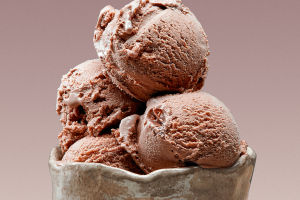As the holiday season marches on, sweet treat can be found anywhere and everywhere. But don’t forget the original sweet treat – fruit! Often known as nature’s candy, fruit is a delicious and satisfying treat. This is especially true of the raspberry. Whether in a recipe or by itself, raspberries can be enjoyed year-round.
According to legend, raspberries were originally white. The nymph Ida pricked her finger while picking berries for the crying infant Jupiter, and raspberries have since been tinged red with her blood. Another old myth about raspberries originates in Germany and claims there are magical qualities of raspberries. It was believed that to tame a bewitched horse, one would have to tie a wild raspberry twig around the horse’s body.
Enough for these legendary stories, here are the real facts of raspberry!
Archaeological evidence shows that Paleolithic cave dwellers ate raspberries. The delectable fruit has been a part of the human diet ever since, though the canes were not cultivated until about the 4th century A.D., as documented by Palladius. Raspberry may have been brought to North America by prehistoric people who crossed the Bering Straight and then introduced them to North America.
The popularity of the raspberry in food and medical uses continued well into the Middle Ages when its juice was also used as a red stain in artwork. The 13th century English king, Edward I, is credited with encouraging the cultivation of raspberries throughout England.
The raspberry is the edible fruit of a multitude of plant species in the genus Rubus of the rose family. The fruit in proper botanical language is not a berry at all, but instead an aggregate fruit of numerous drupelets around a central core.
An individual raspberry weighs from 3 to 5 g (0.11 to 0.18 oz), and is made up of around 100 drupelets, each of which consists of a juicy pulp and a single central seed. A raspberry bush can yield several hundred berries a year. The core of the delicate fruit remains on the plant when picked, unlike that of the blackberry.
There are 53 calories in 100 grams (3.5 ounces) of raspberries. They are 86% water, 12% carbohydrates, and have about 1% each of protein and fat. Raspberries are an excellent source of vitamin C, manganese and dietary fiber. They are a very good source of copper and a good source of vitamin K, pantothenic acid, biotin, vitamin E, magnesium, folate, omega-3 fatty acids and potassium
The health benefits of raspberries include better digestive health, strengthened immune defense, healthy functioning of the heart, prevention of cancer, and relief from endothelial dysfunction. Raspberry provides cognitive benefits and aids in enhancing memory, weight management, keeping the bones strong, skin care, improving vision, keeping disease-free eyes, and normal blood clotting. It may also serve as a valuable food during pregnancy owing to an impressive gamut of nutrients.
Raspberries are usually eaten fresh, often with cream or ice cream, as a dessert fruit. Jams and jellies are also popular, and the fruit is commonly used as a pastry filling.


